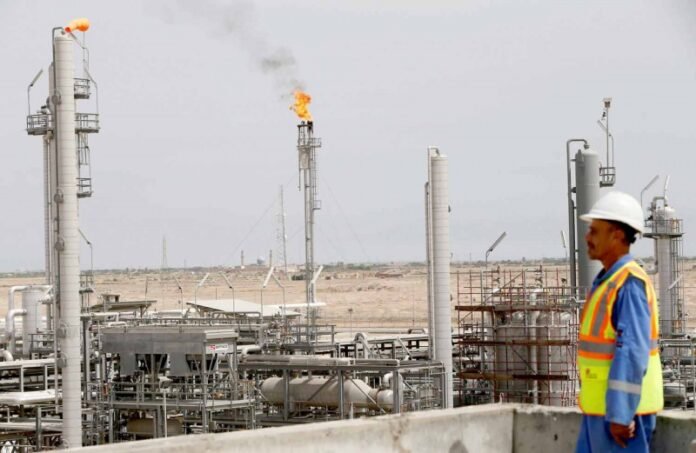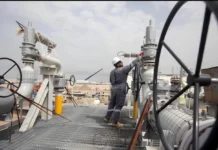According to a report published by the Oil Price website, Iraq possesses vast gas reserves; however, it has yet to develop them effectively, leading to three significant issues for Iraq and the global energy markets. Financial journalist Simon Watkins believes that the first of these issues is Iraq’s heavy reliance on Iran for up to 40 percent of its energy needs, which are met through imports of gas and electricity. This dependence has worsened the already tight control that Tehran exerts on Baghdad through its networks of political, economic, and military agents.
There are three key points to consider. Firstly, imports from Iran have been a source of tension between Iraq and the United States for years, which has hindered investments in the country. Secondly, Iraq often faces severe budget crises, even though it possesses vast untapped oil and gas resources. However, Oil Minister Hayyan Abdul-Ghani stated last week that several major projects awarded to foreign companies will add approximately 3 billion cubic feet per day or 517 thousand barrels of oil equivalent per day to Iraqi gas production. This development will pave the way for the implementation of new projects.
One of the significant gas projects is a part of a four-pronged initiative worth $27 billion, which was originally agreed upon between the French company Total Energy and the Iraqi government in 2021. However, the project was significantly delayed due to attempts by the Iraqis to renegotiate the terms of their agreement.
An initial investment of around $10 billion will be made as part of the deal, which primarily focuses on the “Integrated Gas Growth Project.” The primary objective is to capture the gas associated with oil field development. Previously, this gas was being burned, but now it will be used to meet domestic energy needs and later be exported to generate funds for the budget.
Despite previous failures, Iraq’s untapped gas reserves have significant global potential.
Efforts to use or liquefy previously flared associated gas in Iraq have been encouraged by the recent comments of the Iraqi Prime Minister, Muhammad Shiaa al-Sudani. He stated that Iraq would stop importing gas from Iran.
In May 2020, the former Prime Minister of Iraq, Mustafa Al-Kadhimi, visited Washington to request more financial aid for the country’s corruption-plagued economy. He also requested a 120-day concession to continue importing gas and electricity from Iran, which was the longest ever granted.
After granting financing and exemption, the United States was disappointed to learn that Iraq signed a two-year contract with Iran to continue importing gas and electricity from them, which is a violation of US sanctions. As a result, the United States imposed tough new sanctions on 20 entities in Iraq that were involved in such activities.
In July of last year, Prime Minister Muhammad Shia al-Sudani declared that Iraq plans to compensate for the gas and electricity it imports from Iran by using its oil supplies. He went on to explain that this was a necessary step due to the US sanctions on Iran, which made it challenging for Iraq to make payments through conventional banking channels.
The $27 billion deal in Iraq seems risky as the other three elements of the four-pronged deal are equally susceptible to the ever-changing Iraqi government. The same applies to other major gas deals announced by Iraq, which have been announced several times before with very little progress to show for it.
In 2017, Iraq committed to follow the UN and World Bank’s “Zero Routine Flaring” initiative. The initiative aims to end flaring of routine gas produced during oil exploration by 2030. Iraq was the second-largest gas flarer in the world, after Russia, and had flared around 17.37 billion cubic metres of gas. Around the same time, the Ministry of Oil signed an agreement with the American engineering company Giant Baker Hughes to acquire gas associated with oil from the Gharraf and Nasiriyah oil fields.
The mentioned plans were announced multiple times, with some changes in the participants involved. The initial stage of the Nasiriyah plan (a similar plan was also created for Al-Graf) aimed to utilize an advanced, modular gas processing solution at the integrated natural gas complex located in Nasiriyah. The solution would be used to pressure dry flare gas and generate over 100 million standard cubic feet of gas per cubic meter of gas.
In the second phase of the project, the plan is to expand the Nasiriyah plant and turn it into a complete liquefied natural gas facility that can recover up to 200 million cubic feet per day of dry gas, liquefied gas, and condensates. All of this production will be supplied to the local power generation sector. As per Baker Hughes’ previous statement, processing the flared gas from these two fields will provide 400 megawatts of energy to the Iraqi grid.
Exploration operations in Iraq are expected to increase reserves in the coming years, given the high success rate of prospect drilling.
If Baker Hughes had been permitted to proceed with the project, it would have taken approximately 30 months for its implementation. After the successful implementation of this project, similar development plans could have been implemented for other significant gas capture sites such as Halfaya (300 million cubic feet per day) and Ratawi (400 million cubic feet per day) – which were also identified as potential sites in 2018 and 2020. There was also a possibility to develop synergies with the only major gas project that has achieved significant progress in Iraq, the Basra Gas Company project managed by Shell. Unfortunately, little progress has been made in any of these projects.
Iraq has vast potential to become a major global player in the gas sector, yet its efforts to develop this industry have been unsuccessful. Despite having proven natural gas reserves of about 131 trillion cubic feet, which is the twelfth largest in the world, the rate of exploration for gas reserves has been slower than the exploration for oil. As a result, there could be even more gas reserves waiting to be discovered in Iraq.
It’s worth noting that there could be a significant amount of gas resources associated with further oil development in Iraq. Even using conservative estimates, Iraq only produced about 15-20 percent of its ultimately recoverable oil resources in 2017 when it joined the “Zero Routine Flaring” initiative. This is in contrast to the Middle East as a whole, where the percentage was 23%. These numbers for Iraq have remained relatively unchanged since then, according to the International Energy Agency.
It is highly probable that exploration operations in the coming decades will significantly increase the number of proven reserves. This is especially true in Iraq, where the success rate of prospects drilled is quite high. For instance, only less than half of the potential hydrocarbon-bearing geological sites identified by geophysical methods have been drilled in Iraq, but oil has already been found in 65 percent of them. According to the International Energy Agency, the level of ultimately recoverable crude oil resources is estimated to be around 246 billion barrels (crude and NGLs), with associated gas likely to play a major role.





